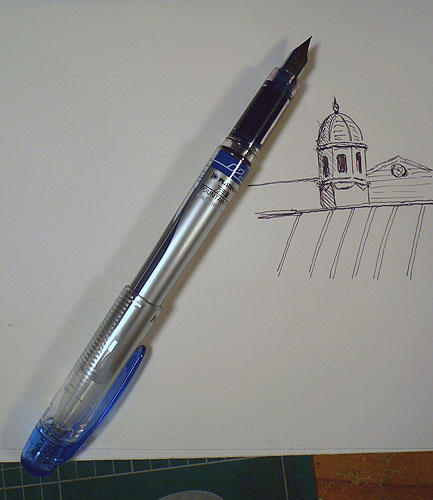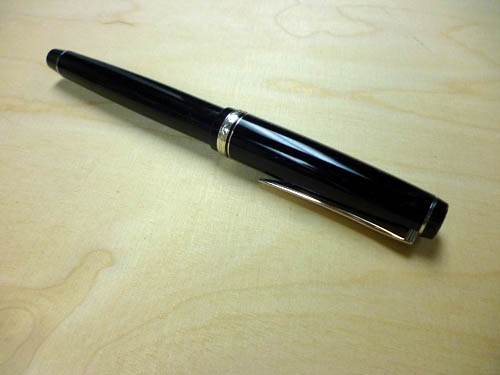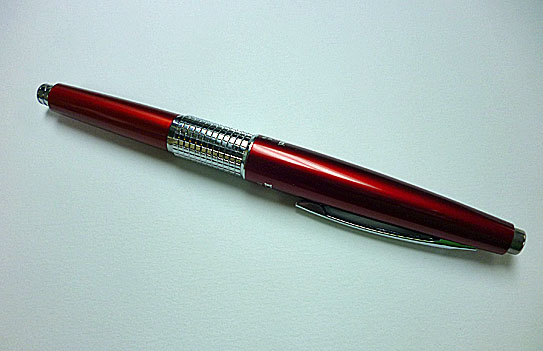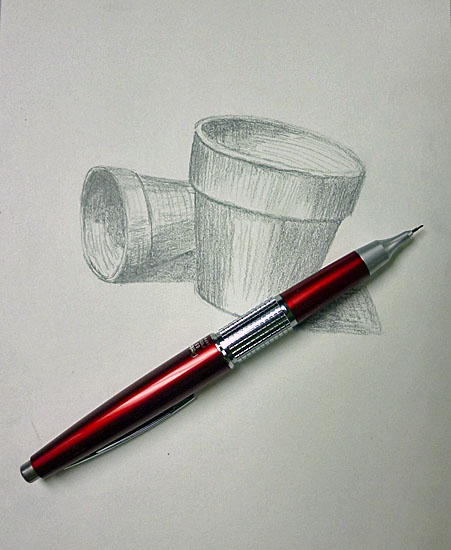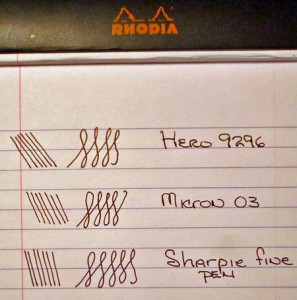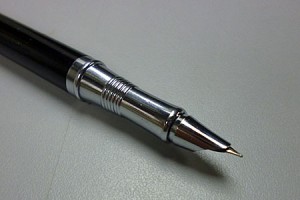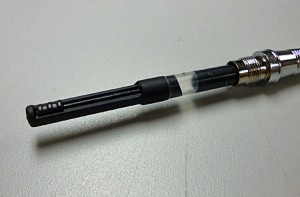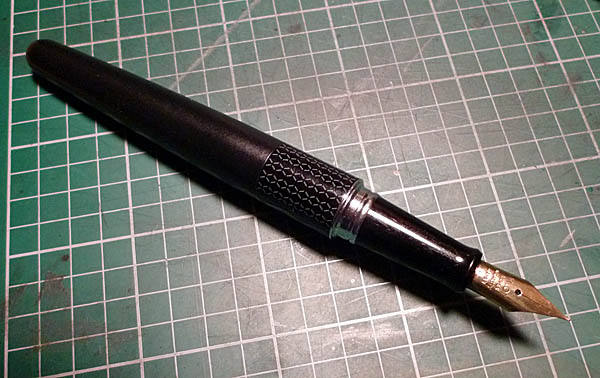I’ve always been a fan of the Platinum Preppy. There is no better bang for the buck ratio in the fountain pen world in my opinion. For a street price of $3-4 you get a fully-functional, cartridge-fed fountain pen that can even be upgraded with a converter if you so desire. It comes in half a dozen colors and each comes with a matching Platinum ink cartridge.
One of the ironies of life is that this inexpensive pen is one of the most reliable pens I own, and I own a lot of pens. Until now, they’ve come in 05 and 03 nib sizes and I’ve always favored the later because I tend to work small and thus love fine-nib pens.
 So, when Platinum released an 02 version of this pen I had to try one. It arrived as part of an order from Jet Pens with one little glitch. Platinum’s cartridges are nice as they use a small metal ball to seal the end. When you insert the cartridge, the ball is shoved into the cartridge and acts as an agitator for the ink, one of the things that makes these pens so reliable.
So, when Platinum released an 02 version of this pen I had to try one. It arrived as part of an order from Jet Pens with one little glitch. Platinum’s cartridges are nice as they use a small metal ball to seal the end. When you insert the cartridge, the ball is shoved into the cartridge and acts as an agitator for the ink, one of the things that makes these pens so reliable.
But guess what happens if you put water-based inks in a -30C environment which was my mailbox. Yep…the ink freezes, expands, and the little ball is shoved out the end. Fortunately, it was washable ink and so an easy clean up. So, my tests with this pen were done with J. Herbin Perle Noire ink rather than with the Platinum blue that comes with it.
The appropriate review word for this pen is WOW. If you like fine pens you will like this new Preppy 02. If you don’t, you won’t. It is just a bit finer than a Micron 01. Like other Preppy pens it is smooth for such a fine nib and I spent half an hour just making hatch marks and little doodles with it.
This pen has a fancier paint job than do the 03 and 05 versions. I’m not sure if this is a remake of the Preppy line and/or if we’ll see this scheme on the rest of the Preppies soon. It is the case that the 02 is more expensive than the 03 and 05, at least right now. Jet Pens currently sells it for a whopping $4.45, or the cost of a decent sized latte at Starbucks (grin).



